Games are a great way to ease math anxiety when you teach multiplication! Try these free 2 step multiplication boom cards. The problems are relatable to students and are just challenging enough.
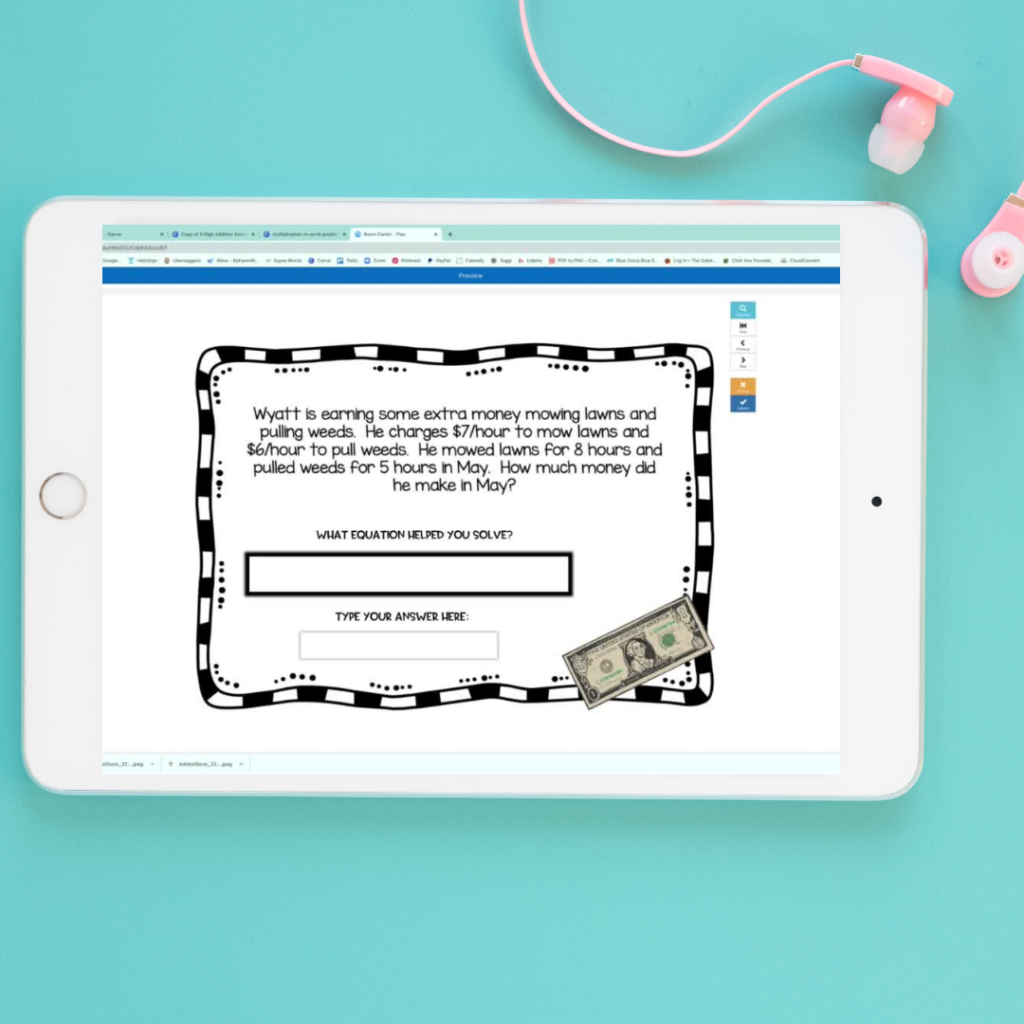
There are More Ways to Teach Multiplication
Math anxiety is REAL, friends. Math anxiety stems from our experiences with math when we were learning and can cause parents to start to sweat when their child asks for help with word problems. As a classroom teacher, you might be the first to teach social studies or language arts when your team decides to compartmentalize subjects- anything but math!! Multiplication can be one of the areas to cause the most anxiety.
When I was growing up, there was ONE way to multiply and one way only- the Standard Algorithm. It was a strategy I could do, but the numbers seemed disconnected, and I never truly understood what was happening. You have to be sure to line up each number under the number you are multiplying by, awkwardly leaving the numbers hanging in a way you don’t see with other operations. Line up one number incorrectly, and all your efforts are for nothing! I could do the math, but ultimately I pursued my degree in writing and English.
Years later, I entered my teacher training program that I learned there were other, more flexible ways to multiply. These strategies made SENSE to me and could have saved countless hours of frustration and crying at the kitchen table! I felt like I had been handed a magic key, like I finally GOT why people actually liked math. The following strategies taught me to love math.
The standard algorithm is still included in the Common Core standards for mastery in 5th grade. I suppose mathematicians use it as a more efficient strategy, but for my money, when showing you how to teach multiplication, I will take one of the following multiplication strategies.
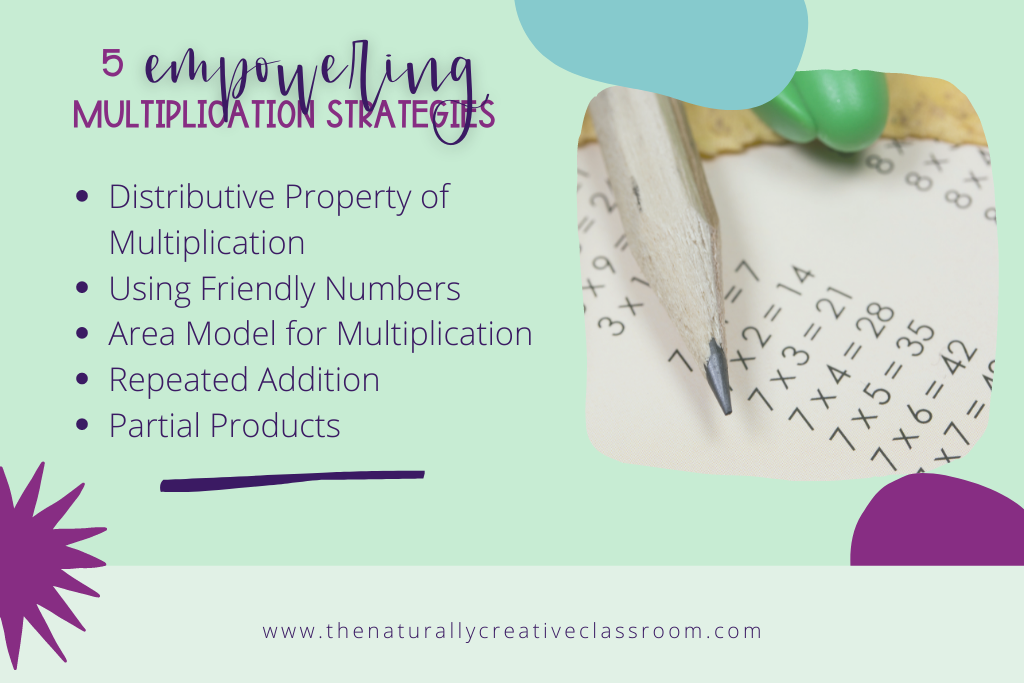
How many of these ways to teach multiplication do you know?
Why Use a Variety of Multiplication Teaching Strategies
Maybe you are here because you want to learn how to teach multiplication to students who are struggling. Perhaps you are a parent of a child who is in tears every night over their math homework, and you don’t know HOW to teach multiplication the way the teacher does.
If you only know one strategy to solve a multiplication problem, such as the standard algorithm, it makes it difficult when your student simply doesn’t understand THAT way. Sometimes, you can explain it until you are blue in the face, and they still might not get it. At that point, you may fall back on teaching a series of steps, teaching the “what,” but not the “why.”
In the end, your student may get the correct answer, but they start at square one with the next problem. Students will often get bogged down by all the steps of the standard algorithm, losing their place because they don’t understand the “why.”
As a classroom teacher, I KNOW for a fact that it is so difficult to cover a curriculum that is a mile long and an inch deep. You may not have covered these strategies with your students due to lack of time, but pulling in an alternate strategy to teach multiplication to a struggling student is helpful. As a parent, I also know that my own kids haven’t learned all of these strategies, and when they are struggling with their math, I often show them a different way to do the math to reduce frustration on both our parts. (My favorite response is, “you don’t know how we’re supposed to do it!”)
Giving students a variety of strategies for solving multiplication problems will boost their confidence and lower math anxiety.
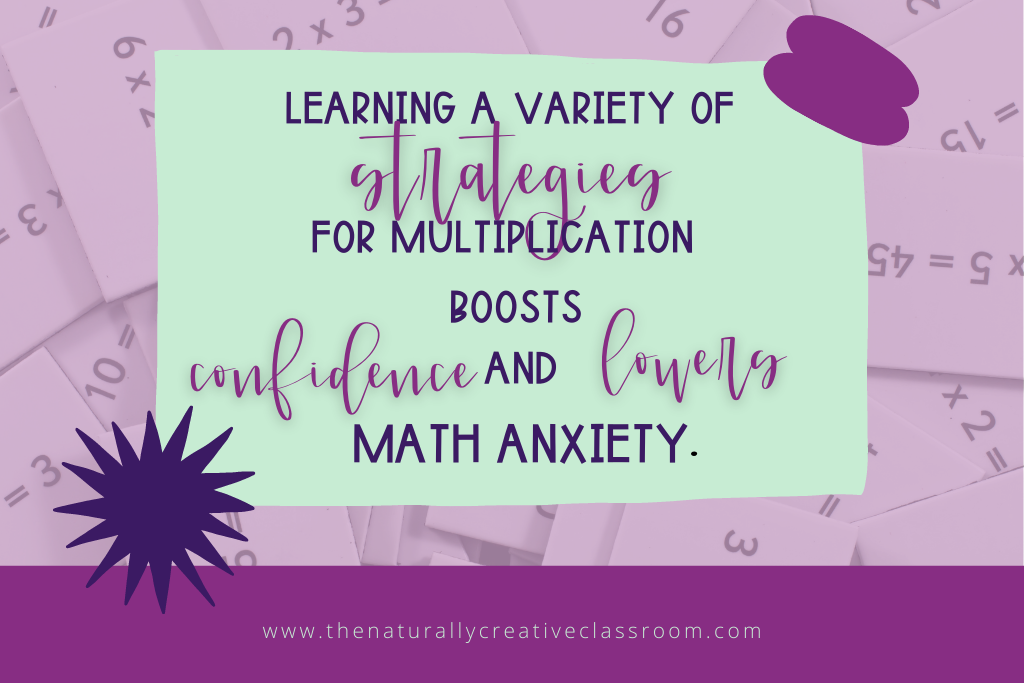
Make sure to Focus on a Number’s True Value
No matter which strategy you use, you want to focus on a number’s true value. The biggest problem with the standard algorithm is that it does not help a student understand the true value of each number. With any multiplication strategy you use, take care to teach the value of each number.
For example, when using the standard algorithm, the actual value of the number gets lost, especially for children who lack strong number sense. For example, in the number 235, the 2 stands for “200”, not simply two.
The BEST part of all these strategies is that NONE of them require bomb squad-like precision lining up the numbers when finding the product.
I want to give you some more tools for your math toolboxes so you can know how to teach multiplication.
Easy Ways to Teach Multiplication
1. Understanding the Distributive Property in Multiplication
One of my favorite ways to teach multiplication is the distributive property of multiplication. The distributive property of multiplication is one of my favorite strategies. Before learning this strategy, I do not recall being taught to break apart a problem. I use the dot to represent the multiplication symbol, so the “x” doesn’t get confused as a problem factor.
This multiplication strategy uses the formula:
a · b = a · (b + c)
(a · b) + (a · c)
In this formula, you are distributing a to both b and c.
The problem can also look like this
a · (b + c) = (a · b) + (a · c)
Watch the video below as I walk you through a problem using the distributive property in multiplication.
2. Teach Multiplication Using the Partial Product for Multiplication
Besides the distributive property of multiplication, this is another of my favorite strategies because it just makes SENSE! In this strategy, students will write down the product for each part of the multiplication problem and then add it all together at the end. While they will need to line it up just as you would an addition problem, this should be easier to do as they will know how to line up the numbers already.
Watch the video as I show you how to solve a problem using the partial product for multiplication.
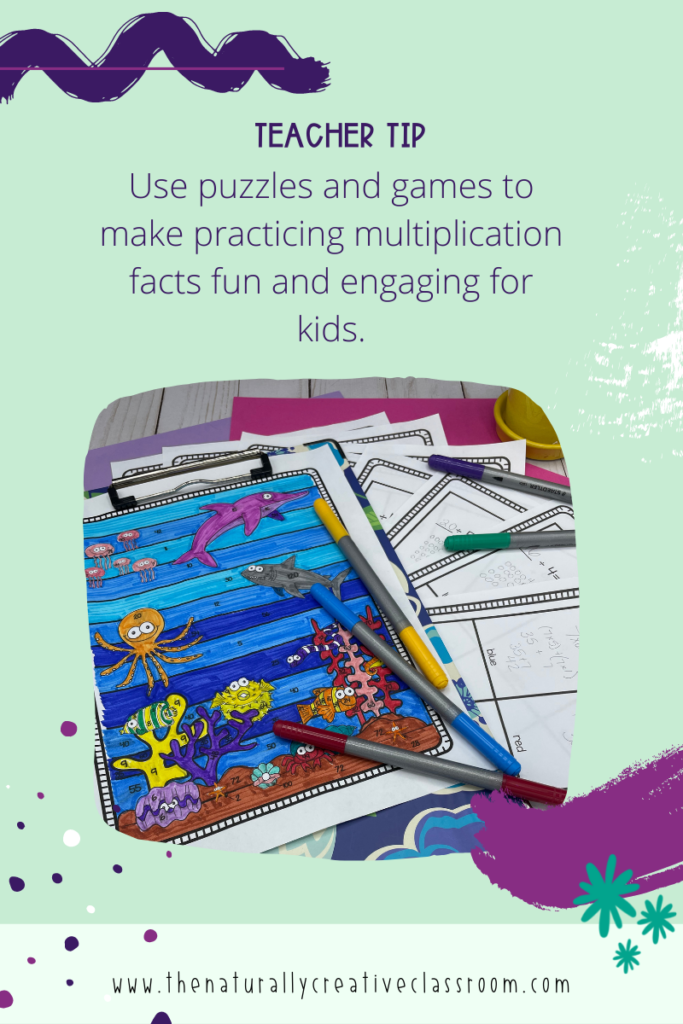
3. How to Use the Area Model of Multiplication
Another strategy that I love to teach multiplication is the area model of multiplication. The area model of multiplication might be a favorite of your visual learners. That is why it is called the area model (not just a fancy name!). With this strategy, you will use the numbers to make a rectangle and then find the area of that rectangle.
Do you recall trying to do a 3 digit number multiplied by a 3 digit number using the standard algorithm?! I often felt like I had completed a marathon when I was done! NO MORE!
Watch the video below as I show you how to complete a problem using the area model.
4. What Does Repeated Addition Mean?
All budding mathematicians will learn that multiplication is just repeated addition. To find the product of 6×7, you can add seven together six times (or six together seven times). At the start, this is a strategy that we would encourage students to learn and use. A strategy that we want them to use AS THEY LEARN THEIR FACTS.
Kids get into trouble with this multiplication strategy when they start to solve problems like 17 x 8. I have seen students start to write out the number 17 eight times in a long string and try to solve. This is confusing and likely to create more problems. In this scenario, you will want to encourage them to use a different strategy, such as the area model or partial products. It would also be a good idea to encourage students to practice their basic facts at home.
Here is a video on how to teach multiplication using repeated addition:
5. Introducing the Friendly Numbers Strategy Multiplication
Using the friendly numbers strategy to teach multiplication is great for those just getting a handle on their facts. In my opinion, it is best to use it when trying to solve problems such as 9×6. For me, my 8s and 9s have always been the most difficult facts to remember, and this strategy helps me to this day.
To use this strategy, you would ask the student if they know another fact that can help get them close and help them solve 9×6. With questioning, you can get them to 9×5. Most likely, they will use their fingers to count by fives to 45. We know that 9×5 is 9 groups of 5 (or 5 groups of 9).
We know that we need just one more group of 9 to find the answer. 45+9= 54.
Alternatively, we can use 10×6=60. We know that we need one LESS group of 6 to find the answer when using this problem. Students would then complete 60-6 to get to 54.
Here is a video on the friendly numbers strategy:
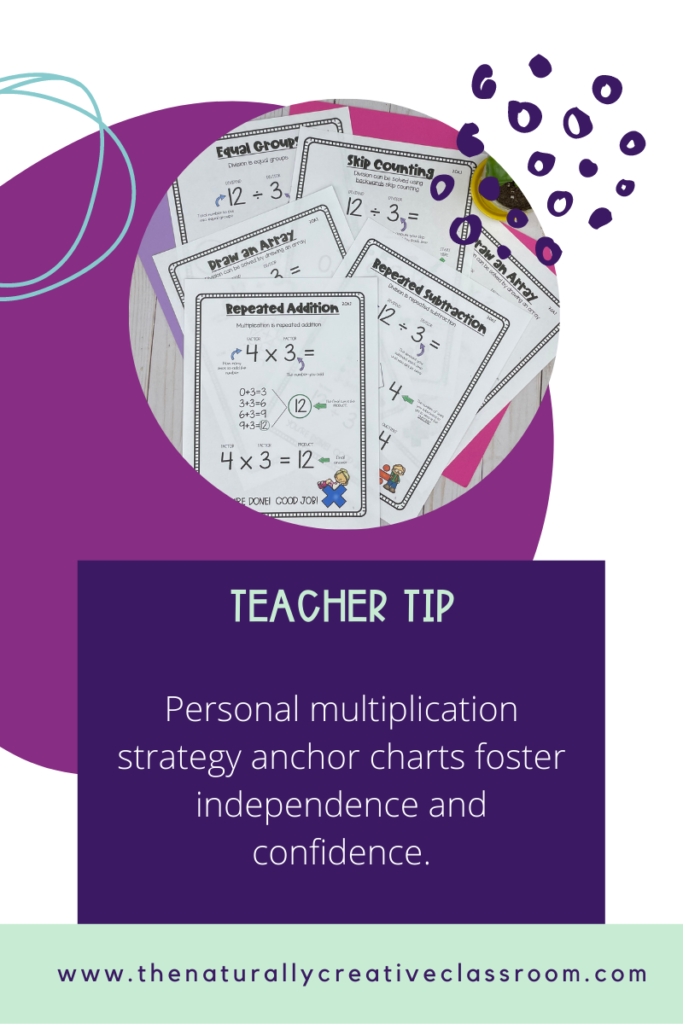
What type of Practice Should I use to Learn Multiplication Faster?
There is no magic wand that will get a student to learn multiplication faster, sorry! It will take practice, time and using strategies like:
- Distributive Property of Multiplication
- Partial Products
- Area Model
- Repeated Addition
- Friendly Numbers
Through strategies like these and methods like gamification, we can encourage our students to open their minds a bit, reduce math anxiety, and start seeing math differently.
My passion is creating math resources that will inspire a lifelong love of math through gamification. The resources featured in this blog are from my Under the Sea fully gamified unit. This color by number features two versions – one that practices only multiplication facts, and one with a mix of multiplication and division so you can easily differentiate.
Other rigorous, common core aligned practice include secret messages that reveal cool, researched ocean facts or side splitting jokes they can tell their friends, a 120 problem hidden picture, boom cards and more!
Puzzles can be purchased individually, or challenge your students with a board game with badges, risk and XP.
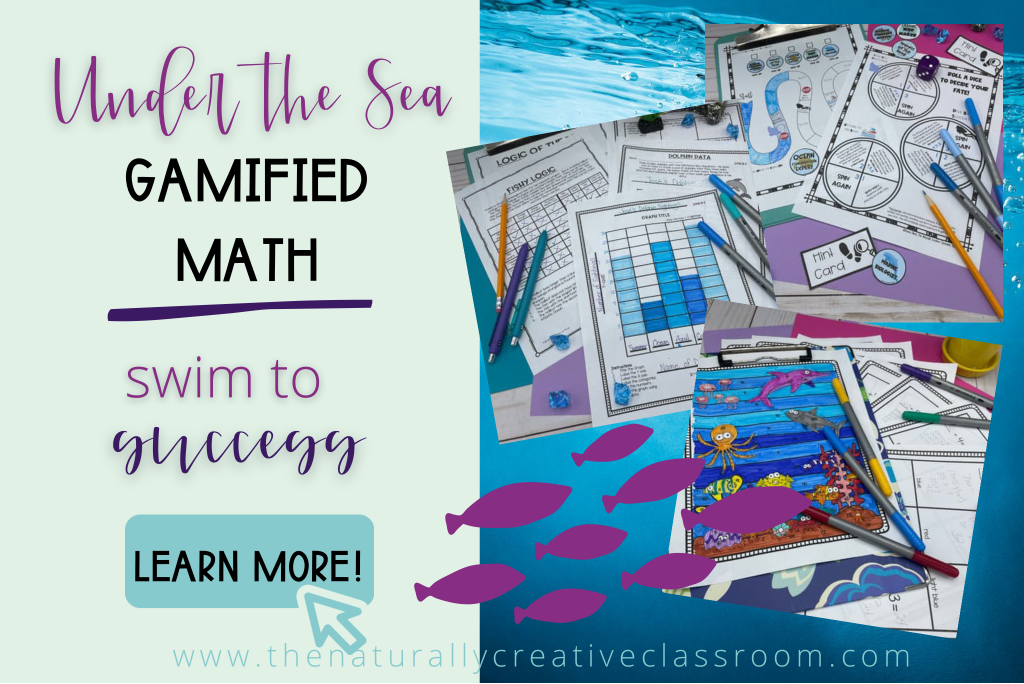



One Response